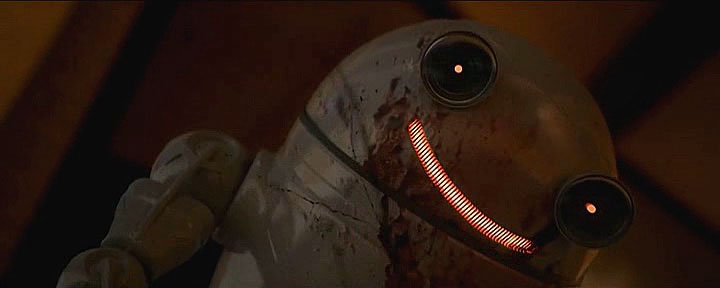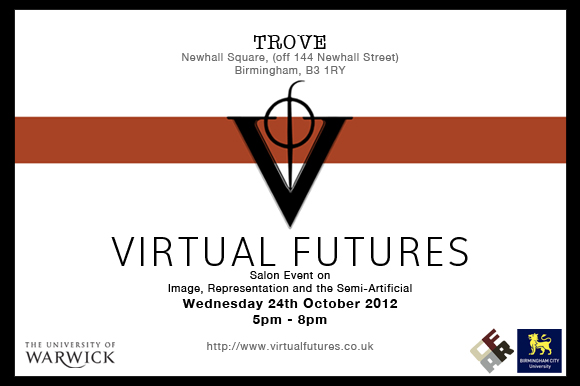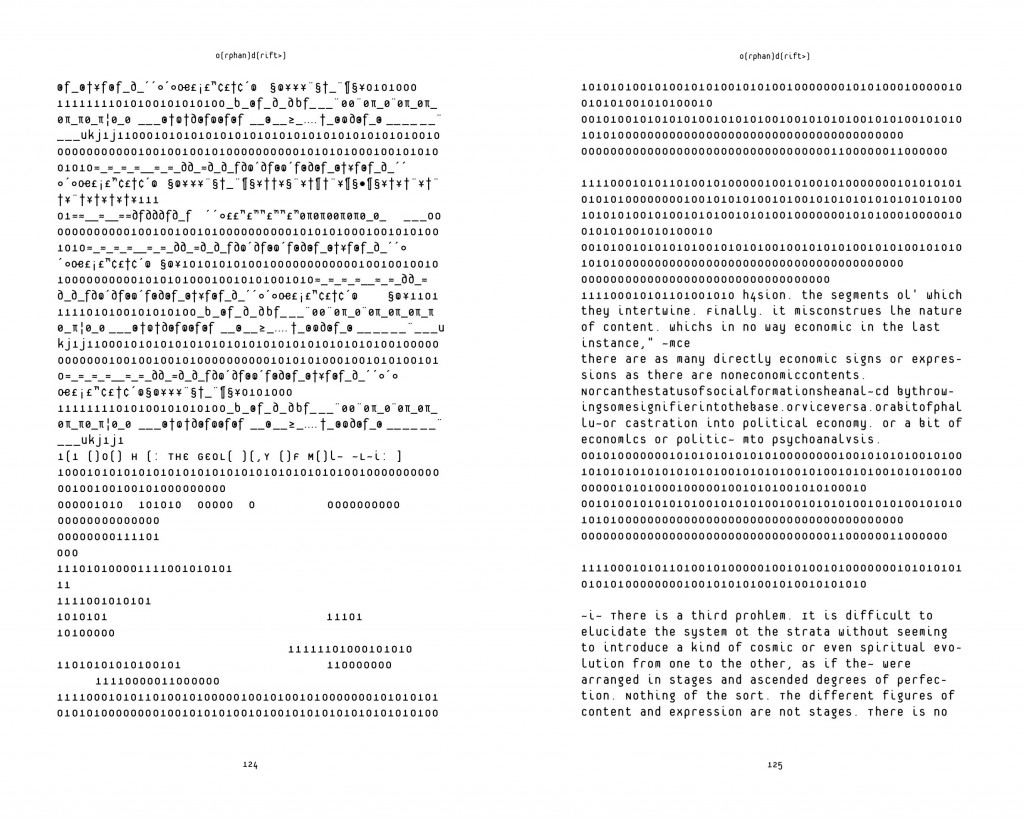Dan O'Hara
@skeuomorphology

I spoke to BBC News Magazine about skeuomorphism: the article’s here. It’s quite a nice overview, and at least avoids Techcrunch’s current conclusion that the opposite of skeuomorph = ‘flat’.
If you’re interested in the more scholarly side of skeuomorphism, I’ve put an open access version of the paper I wrote for the Cologne Institute of Advanced Studies journal ‘Morphomata’ here: “Skeuomorphology and Quotation”.
Partly inspired by Ruairi Robinson‘s excellent short Blinky TM, which I saw at the Rio Short Film Festival in 2011, I’ve co-authored a paper with Shaun Lawson, Conor Linehan and Ben Kirman from the Lincoln Social Computing Research Centre at Lincoln University, being given tomorrow at ACM CHI2013: Changing Perspectives in Paris (3-letter code ANS).

The Sinister Tech Research tumblr nails it. If you’re in Paris, come along. Your presence won’t change anything – the future still belongs to robots. But at least you’ll know why.
Edit, 2.5.2013: the slides are now available here, and the full paper can be downloaded here.

Earlier this month I spoke several times with Chris Baraniuk about the febrile skeuomorphosis currently smearing itself across the internet. UI designers seem particularly immunodeficient as disease vectors in this regard, and present a clear viro-semantic danger to the 99.9% of language users who are not UI designers. Chris has now published the results of his research on The Machine Starts:
October 24th saw the first of a series of Virtual Futures salon events.

This was a very sexy event: held in the TROVE gallery, a very Berlin-style disused warehouse right in the centre of the city, and showcasing some of the strangest and most avant-garde art and thought happening right now. Prof. Johnny Golding from the Centre for Fine Art Research at BIAD, Birmingham City University, introduced the evening, which was organized by the director of Virtual Futures, Luke Robert Mason.
I spoke about maps and wiring diagrams, ‘photogenic drawing’, glitch, and (implicitly and probably entirely predictably) the dangers of animism, anthropomorphism, and the god in the machine. Dr. John Pickering from the Psychology department at Warwick University told us about the limitations of AI in military (and other) robots, digging a little deeper into the ways in which our mental constructs conspire to produce sympathy for machines, and bringing some much-needed historical rigour to the current drone-delirium. Sascha Pohflepp gave us selected glimpses of his artworks from the past five years, ranging from his genetically-modified plant visions (created with Daisy Ginsberg) to his simulations of spaceflight weightlessness, which touched a Stelarc-like VF nerve in their evocations of the human body reaching escape velocity.
The event then marked the return of Orphan drift, after fifteen years, to Virtual Futures and to the UK, when Mer Roberts introduced a screening of the Orphan drift film ‘A Wilderness of Nowheres’: timely, as the Orphan drift book Cyberpositive has just been published in a new edition. Franken Beaumont‘s eerie installation artwork sat behind the audience, its mouth moving as if echoing the speakers; Liam Worth‘s dynamic ferrofluid sculpture was also on display, as were J.R. Dooley‘s dancing, dynamic sonic/visual cellular forms. Pat Cadigan capped the evening with a masterclass in story-telling, her apparently effortless facility with verbal imagery giving us all a metaphorical lesson in the proper use of tools.
But the most momentous statement of the evening was left to Luke Robert Mason, who announced that the Virtual Futures conference will return next year, taking place as a city-wide festival in Birmingham, running from the 25 – 27 October 2013…
First Five features my five cannot-live-without websites today.
A new edition of the O(rphan)d(rift>) book from 1995, Cyberpositive is out on the 19th of July.

This is a very timely re-issue given the recent vaunting of the ‘New Aesthetic’, which may be interesting insofar as it expresses some digital artists’ felt need for *something* new at the present, but gives the rest of us a sense of weary deja vu. As McKenzie Wark notes in interview with David Cox, the ‘New’ Aesthetic has been around since the late 80s and early 90s; most of its central themes and tendencies were documented and theorized by, among others, Scott Bukatman in his 1993 book Terminal Identity.
Indeed, it’s astonishing how backwards-looking the New Aesthetic is: the high Modernist ‘machine vision’ trope derived from Dziga Vertov’s ‘kino-eye’ (1923) and T. E. Hulme’s rethinking of Worringer’s ‘tactile vision’ (1924); the obsession with the virtual repeating Wyndham Lewis’ invitation to enter the “transposed abstract universe” of The Cubist Room (1914); the tendency to reveal structure, a commonplace of postmodern fiction since the 1960s; the use of algorithms and bricolage, a faint echo of John Cage’s aleatoric compositions such as Child of Tree (1975); the discovery of ‘glitch’ a simple duplication of, well, glitch, in everything from the visual glitches in The Max Headroom Show (1985) to the glitch techno movement after Basic Channel (1993)…
Of course, to catalogue the antecedents of a current movement is not to deprive it of its newness in combining those influences. But these particular influences have already combined to produce exactly the same aesthetic once before in the 1990s, from when The Silicon Man was first published (1991) to when Mute magazine’s pilot issue appeared (1994), Virtual Futures took place (1994-6) and O(rphan)d(rift>) published Cyberpositive (1995).
If the popularity of the New Aesthetic does anything positive, it’s to get people talking about aesthetics generally for the first time since the 1920s; though it’s depressing to contemplate the advent of a generation of New Aesthetes. But it also suggests that the mainstream has finally acclimatized to the aesthetic of the mid-1990s. To read Cyberpositive again is like meeting the scarred and tattooed badass older brother of NA, fresh out of prison and hungry to go whoring and scoring. It’s exactly the jab in the arm the NA movement needs.
The book launch is (once again, as it was in 1995) at the Cabinet Gallery in London, from 6pm to 9pm on the 19th July.

Had an extraordinary day at the Lincoln Social Computing Research Centre at the University of Lincoln on the 6th June, having been invited to talk about “Emergence and the Synthetic Aesthetic” by Shaun Lawson. Lincoln’s a place to watch: as far as humanities computing goes at the moment, these guys are streets ahead, for the simple reason that they’re actually thinking reflectively about what they’re doing. Sadly, about two questions into the q&a session, the university had to be evacuated owing to a bomb hoax. Cue reflective thinking in the pub.
Find out more about the work LiSC is doing here.